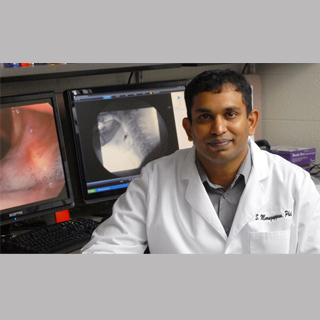
Apparently, patients with swallowing disorders have more chances to have ‘wet voice’ since they frequently lose sensation in their larynx. Once that occurs, it’s simple for food or liquid to evade the esophagus and land on the larynx. From there, it may fall down into the lungs and result in respiratory complications.
Shanmugam Murugappan is of the opinion that physicians at present identify wet voice by listening to changes in the patient’s voice. But such an approach may result in contradictions in diagnosis or treatment. In its place, he is examining the sound generated by wet voice, thereby discovering diverse methods to signify the signal by exhibiting dissimilar acoustic behaviors.
Shanmugam Murugappan, commented, “You need a training tool to say ‘this is the standard voice’ and ‘this is wet or gurgly voice. That definition is not there. So the goal of this work is to try and identify what defines a wet voice.â€
Working with Suzanne Boyce, PhD, and Lisa Kelchner, PhD, of the UC College of Allied Health Sciences’ Department of Communications Sciences and Disorders, otolaryngology’s Sid Khosla, MD, and engineering’s Ephraim Gutmark, PhD, Murugappan positioned several consistencies of fluid on top of a larynx model. Researchers then mimicked voice production by blowing air over the model. The ensuing sound is apparently like the voice produced when materials collect on a patient’s larynx.
His outcomes supposedly demonstrated apparent distinctions in the sound’s behavior depending on what material was utilized. By gauging the sensitivity or chaos of the sound, he mentioned that researchers may tell if any, material was there. They may be able to even study diverse fundamentals of the sound depending on how Murugappan examines the signal.
He remarked, “People are used to looking at a signal one way, but you can actually take that signal and present it in a different form, which looks like an object in space. You can take the same signal and you are now showing it in a different way … and it’s easier to study. You can actually characterize the whole range of fluid and food material that you want to study. It can be developed into a database or a preliminary diagnostic tool to find out who would be the right candidate for further evaluation. It also can help train the speech pathologists who are doing these exams in the first place.â€
Murugappan anticipates these new characterizations may enable physicians to recognize swallowing disorders in patients in an easier way.
